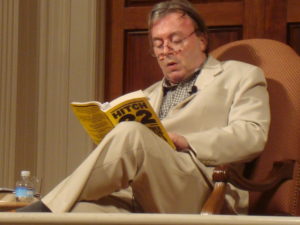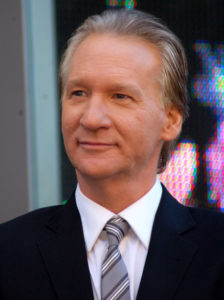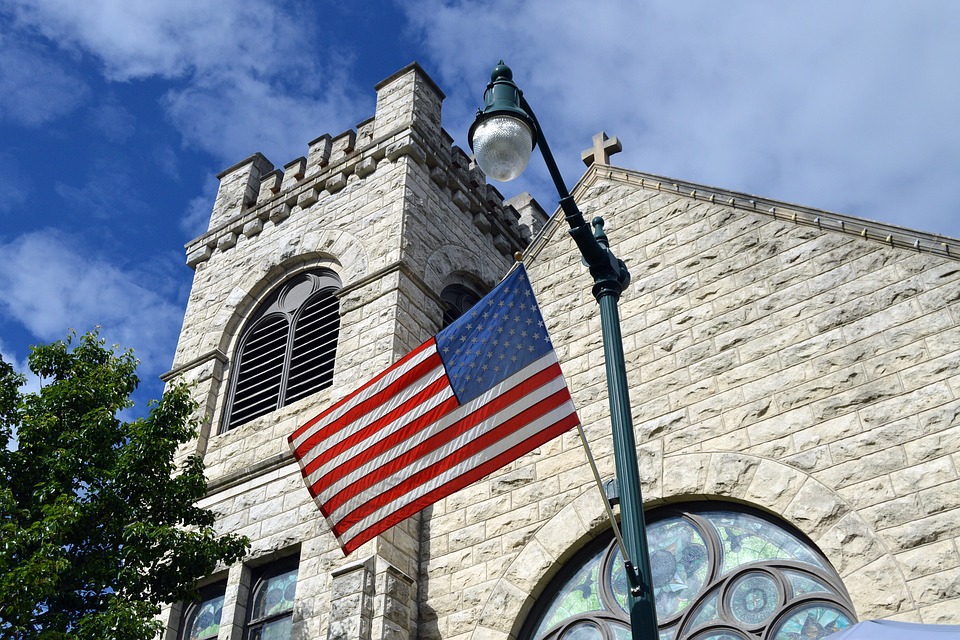Ohio, Nation Less Religulous
Atheists, Humanists No Longer Fear Their Secular Orientation
April 30, 2009
COLUMBUS, OHIO: As the high tide of Republican control of the government in Ohio and the nation recedes from the sea change made possible by the onset of the Reagan Revolution of the 1980s, is the related retreat of religion among Americans being filled in part by atheists who no longer fear to proclaim their secular orientation?
The American Religious Identification Survey (ARIS ), performed in 2008 by investigators at Trinity College in Hartford, Conn, shows Americans are “slowly becoming less Christian,” not because the dominant religious sect in America is being threatened by other world religions but from a general “rejection of all organized religions.”
Whether “Religulous the documentary spoof released in 2008 about the absurdity of religion in general and the sheer goofiness of some true believers in particular, was a factor in the ARIS survey can only be attributed to either divine intervention sheer speculation. But such a movie would have been impossible to produce or show in public in decades past and would have been difficult to distribute just a few years ago. The times are indeed changing.
What Famous Atheists Thought of Religion?
Other celebrity atheists like Christopher Hitchens , who believes religion poisons everything, or Richard Dawkins , who said he is against religion “because it teaches us to be satisfied with not understanding the world,” have helped lead the charge out of the pew and into the public square, where others of their ilk will gather to brandish their status as non-believers.
Principal ARIS investigators Barry A. Kosmin and Ariela Keysar, who conducted this third landmark series of large, nationally representative surveys that track changes in the religious loyalties of the U.S. adult population within the 48 contiguous states from 1990 to 2008 and that collected answers from over 54 thousand participants, said people who identified themselves as not being affiliated with any religious group grew by almost 20 million adults since 1990, or a rise from 8.2 to 15 percent of the total population.
More worrisome for traditional believers in “The Father, the Son and the Holy Ghost,” or as Bill Maher, the force behind Religulous, calls them, “people who believe in talking snakes.” is that that figure rises to nearly 20 percent, or one in five adults, if those surveyed who didn’t know their religious identification (0.9) or who refused to answer their key question (4.1) is included in the “None” category.
In a related story about the coming-out party many atheists who once kept silent on the topic of religion for fear of being socially ostracized or hurt professionally are experiencing, Laurie Goodstein, of the New York Times, writes that the new-found bravery by a growing number of non-believers to proclaim their secular, humanist leanings is refreshing and beckons others to do the same.
More than ever, Goodstein says, America’s atheists are “linking up – on the Internet, in bars, advertising on billboards and buses and in other ways” – and speaking out in the same way gay-rights advocates have done for decades in their plight to gain legal and social legitimacy.
One reason atheists have become bolder of late to stand up and be counted is reaction and fallout to eight years of the George W. Bush administration who overtly embraced and invited the religious right – who in recent years were strong enough to nominate and elect public officials at all levels of government – to participate and share in the re-creation of government in their image.
 And while an avowed atheist probably still has little chance of being elected to any office let alone a national one, the days of cowering in a closet are over. Atheists as a group still rank lower than any other minority or religious group, according to ARIS. But their gains, exemplified by a once-unthinkable advertising campaign that says “Don’t Believe in God? You Are Not Alone,” may affect the coming war between Republicans, who believe staunchly in Jesus but who show little sympathy for helping individuals who are treated unkindly by fate and circumstance, and Democrats, who are seen by more young people especially as more socially conscious and sympathetic to the plight of those less fortunate.
And while an avowed atheist probably still has little chance of being elected to any office let alone a national one, the days of cowering in a closet are over. Atheists as a group still rank lower than any other minority or religious group, according to ARIS. But their gains, exemplified by a once-unthinkable advertising campaign that says “Don’t Believe in God? You Are Not Alone,” may affect the coming war between Republicans, who believe staunchly in Jesus but who show little sympathy for helping individuals who are treated unkindly by fate and circumstance, and Democrats, who are seen by more young people especially as more socially conscious and sympathetic to the plight of those less fortunate.
Christian’s Impact on State Laws
In Ohio, where the Christian right has had a major impact on state laws, from the regulation of adult entertainment businesses to passing a statewide amendment to the Constitution in 2004 that banned gay marriage, the resurgence of Democrats in the guise of a new governor and a new majority in the Ohio House of Representatives may bode ill for Republicans who find themselves on the defensive as the human wreckage of job losses resulting from a dystopian economy many blame them for piles up below executives and general assemblies who are being thrashed for not budgeting for their needs.
In their statistics on states, ARIS investigators show Ohio’s “Nones” category more than doubled, from 8 to 17 percent, between 1990 and 2008. Similar gains by atheists were seen in Ohio’s neighbors, Illinois (13), Indiana (15), Michigan (16) and Wisconsin (15).
Among the surveys, highlights are that 76 percent of American adults identify as Christians, down 10 points from 1990 and that 34 percent considered themselves in 2008 to be “Born Again or Evangelical Christians.” Catholics declined in New England states and in New York but rose in California and Texas where Hispanics are on the rise.
ARIS said that based on their stated beliefs rather than their religious identification in 2008, 70 percent of Americans believe in a personal God, while about 12 percents are atheists (no God) or agnostic (unknowable or unsure), and another 12 percent are deistic (a higher power but no personal God).
ARIS broke out 31 categories of religious traditions from Catholic to Baptist to Pentecostal, to Buddhist, Muslim or Jehovah’s Witness. There was no category for “Born Again Pagans” or “The Church of Dark Energy,” two traditions I hope to lead one day.






